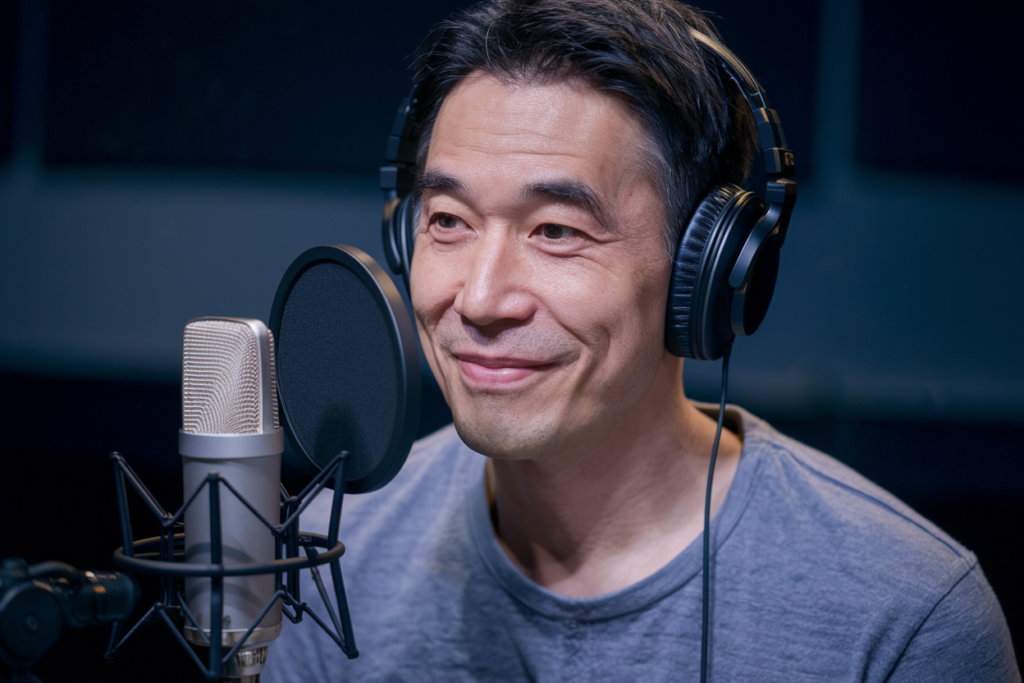Key Takeaways
- Japanese Native Speaker Count: Approximately 125 million people speak Japanese as their native language, primarily in Japan, highlighting its cultural significance.
- Unique Language Structure: Japanese features a distinct subject-object-verb order and three writing systems (Kanji, Hiragana, Katakana), making it unique and complex compared to other languages.
- Cultural Influence: The language plays a vital role in global industries such as entertainment and technology, especially through mediums like anime and video games.
- Demographic Insights: Understanding the age and gender distribution among Japanese speakers is crucial for tailoring communication strategies in voiceover work.
- Globalization Impact: As Japan continues to influence worldwide culture, proficiency in Japanese can open up diverse opportunities in business collaborations and creative projects.
- Learning Resources Available: There are numerous online courses and local classes that can help individuals master the language, enhancing their skills for professional growth.
Ever wondered just how many Japanese native speakers there are in the world? With Japan’s rich culture and global influence, understanding the number of people who speak this beautiful language can open doors to new opportunities.
Overview of Japanese Language
Japanese ranks as one of the most unique languages globally, spoken by approximately 125 million native speakers primarily in Japan. It’s a complex language characterized by three writing systems: Kanji, Hiragana, and Katakana. Kanji consists of thousands of characters borrowed from Chinese, while Hiragana and Katakana each contain 46 basic symbols used for phonetics.
Understanding Japanese can unlock various opportunities in business and culture. Its distinct phonetic sounds allow for expressive communication; this is particularly relevant when considering voiceover work. A skilled voice artist can convey emotions effectively through nuanced pronunciation and intonation.
The language’s structure also features subject-object-verb order, which differs significantly from English’s subject-verb-object format. This variance presents challenges but also enriches storytelling possibilities in voice acting. For instance, mastering these intricacies enhances a voice actor’s ability to deliver performances that resonate with audiences.
With its rich cultural context—drawing from centuries of history—Japanese continues to influence global art forms, including animation and film. Voice talents proficient in Japanese contribute significantly to international projects by bringing authentic character portrayals alive through their performances.
As you explore the world of Japanese language and culture, consider how your understanding may enhance your engagement with native speakers or clients seeking quality voiceover services that require a deep appreciation for linguistic subtleties.
Global Languages and Their Native Speakers
Understanding the global landscape of languages can provide valuable insights, especially if you’re in fields like voiceover work. The number of native speakers can impact how you approach projects across different cultures.
The Importance of Native Speaker Counts
Native speaker counts reflect not just the size of a language community but also its cultural richness. With about 125 million Japanese native speakers, this figure indicates a strong cultural influence that extends beyond Japan. For voice artists and actors, knowing these numbers can shape your strategy for engaging with diverse audiences. When you understand the language’s reach, you can tailor your performances to resonate more deeply with listeners.
Comparative Analysis with Other Languages
In comparison to other major languages, Japanese holds a unique position. For instance, Mandarin boasts over 900 million native speakers, while Spanish has around 460 million. Despite fewer speakers than those languages, Japanese offers distinct advantages in specific markets—especially in entertainment and technology sectors where localizing content is crucial.
Here’s a quick table comparing several global languages and their native speaker counts:
| Language | Native Speakers (millions) |
|---|---|
| Mandarin | 900 |
| Spanish | 460 |
| English | 377 |
| Hindi | 310 |
| Arabic | 310 |
| Japanese | 125 |
This data illustrates how even less populous languages like Japanese play an essential role in niche industries such as animation and gaming. As a voice talent or actor, recognizing these nuances allows you to enhance your craft by embracing the linguistic diversity inherent in these communities. Engaging authentically with audiences leads to more impactful storytelling and character development in your work.
Estimating the Number of Japanese Native Speakers
Estimating the number of Japanese native speakers involves analyzing various data sources that provide insights into language demographics. The figure is often cited around 125 million, mainly residing in Japan, but understanding the nuances behind this number reveals more about its global context.
Sources of Data on Native Speakers
Data on native speakers comes from several reputable sources. National census reports, linguistic studies, and educational statistics offer valuable insights into speaker populations. For instance, the Ethnologue database provides comprehensive language statistics worldwide, including detailed counts for Japanese speakers. Academic publications and governmental research also contribute to understanding regional variations and dialects within Japan’s population.
Factors Affecting Speaker Counts
Speaker counts fluctuate due to multiple factors. Population growth plays a significant role; as Japan’s birth rate declines, overall numbers might stabilize or decrease. Migration patterns also impact counts—Japanese expatriates living abroad can influence how many recognize their native tongue while integrating with local cultures.
Additionally, language education affects proficiency levels among younger generations. As globalization increases exposure to English and other languages, some individuals may choose not to maintain fluency in Japanese. In industries like entertainment or technology where proficiency is essential—think voice actors delivering authentic performances—the need for skilled speakers remains high despite these challenges.
Understanding these dynamics surrounding Japanese native speakers not only highlights the importance of language preservation but also emphasizes opportunities for voice talent in portraying authentic characters across various media formats globally.
Demographics of Japanese Native Speakers
Japanese native speakers total around 125 million, with the majority residing in Japan. Understanding the demographics behind these numbers can provide valuable insights into communication strategies, especially for voice talent looking to engage with this audience.
Geographical Distribution
Japan is the primary hub for Japanese speakers. Cities like Tokyo, Osaka, and Kyoto host large populations fluent in the language. Outside Japan, communities exist in countries such as Brazil and the United States due to migration patterns. These areas often maintain cultural ties through local schools and community centers that promote language education.
Age and Gender Statistics
Age distribution among Japanese speakers shows a notable concentration in younger generations who actively use social media and digital platforms. This demographic tends to favor contemporary expressions of the language, which can influence voiceover trends. Gender statistics reveal slight variations in language use; women often dominate sectors like education and healthcare while men are more prominent in technology-related fields. Recognizing these nuances helps tailor voice acting styles to resonate with specific audiences effectively.
Understanding these demographics enriches your approach when working on projects that involve Japanese content or characters, ensuring you connect authentically with listeners through your voiceovers.
The Role of Japanese in the Modern World
Japanese plays a significant role in various global industries, particularly in entertainment and technology. As you explore opportunities within these fields, understanding the language’s nuances becomes crucial for effective communication.
You see, voiceover work thrives on cultural authenticity. Proficiency in Japanese allows voice actors to deliver performances that resonate with audiences. It’s not just about translating words; it’s about conveying emotions and capturing the essence of characters. A skilled voice artist brings stories to life, making them relatable and engaging.
In anime and video games, where Japanese language and culture heavily influence storytelling, native speakers excel at creating authentic voices. This demand for genuine portrayals highlights how vital fluency is for voice talent aiming to connect with fans globally.
Moreover, Japan’s impact extends beyond its borders through pop culture phenomena like J-Pop and anime series that have captivated international audiences. These cultural exports emphasize the need for professionals who understand both the language and cultural context behind their projects. By mastering Japanese, you position yourself as a valuable asset in this competitive landscape.
With an estimated 125 million native speakers worldwide, knowing Japanese opens doors across numerous sectors including business partnerships and creative collaborations. Whether you’re working on a commercial or an animated feature film, fluency enhances your ability to navigate conversations with clients or collaborate effectively with team members.
As globalization continues to shape our world, Japan remains a key player in innovation and creativity. Engaging with this rich linguistic landscape not only enriches your skill set but also elevates your potential as a versatile voice over actor or artist ready to tackle diverse projects.
The growing interest in learning Japanese shows no signs of slowing down either—more people recognize its value today than ever before. If you’re considering expanding into this market or enhancing your offerings as a voiceover professional, investing time into understanding the language pays off significantly.
Explore resources available for mastering Japanese; online courses or local classes can provide practical insights into everyday usage along with industry-specific jargon essential for your craft. Embracing this challenge positions you ahead of others who may overlook such opportunities amidst their focus on more widely spoken languages.
Navigating the intricacies of Japanese can seem daunting at first glance—its three writing systems (Kanji, Hiragana, Katakana) each serve distinct purposes—but even basic comprehension dramatically enhances your performance quality when portraying characters authentically designed from their cultural roots.
Understanding demographics related to native speakers also proves beneficial as different regions exhibit unique dialects or expressions found throughout Japan itself—all further enriching storytelling capabilities! With dedicated practice paired alongside ongoing engagement within relevant communities both locally and abroad—you’ll develop invaluable connections while exploring exciting avenues within this dynamic field!
Conclusion
Understanding the number of Japanese native speakers is more than just a statistic; it’s a gateway to countless opportunities. Whether you’re looking to break into voice acting or seeking to engage with Japan’s rich culture, mastering this complex language can set you apart in competitive fields.
The unique phonetic sounds and writing systems make Japanese not only challenging but also rewarding to learn. As globalization continues its relentless march, the demand for skilled Japanese speakers grows across industries like entertainment and technology.
Embrace the journey of learning Japanese and discover how it can enhance your professional prospects while deepening your appreciation for Japan’s vibrant cultural landscape. Your efforts will certainly resonate in an interconnected world where authentic connections matter more than ever.
Frequently Asked Questions
How many native Japanese speakers are there worldwide?
Approximately 125 million people speak Japanese as their native language. Most of these speakers reside in Japan, with smaller communities found in countries like Brazil and the United States.
What writing systems are used in the Japanese language?
The Japanese language uses three writing systems: Kanji, Hiragana, and Katakana. These systems work together to form a rich and complex written expression of the language.
Why is knowing Japanese beneficial for voice acting?
Proficiency in Japanese allows voice actors to convey emotions accurately through nuanced pronunciation, ensuring authentic character portrayals in anime, video games, and other media formats.
What factors influence the number of Japanese speakers?
Factors such as population growth, migration patterns, and education affect speaker counts. Globalization also influences individuals’ choices about maintaining fluency in Japanese.
Where do most native Japanese speakers live?
Most native speakers reside in Japan, particularly concentrated in major cities like Tokyo, Osaka, and Kyoto. There are also communities abroad that maintain cultural ties through local initiatives.
How does understanding demographics help in voiceover projects?
Understanding demographics enriches storytelling by ensuring authentic connections with audiences. It allows creators to tailor performances according to age and gender variations within the language’s use.
What industries require skilled Japanese speakers?
Industries such as entertainment (anime and film) and technology have a high demand for skilled Japanese speakers due to their reliance on genuine portrayals for products targeting both local and global markets.
Are there resources available for learning Japanese?
Yes! Numerous resources exist for learningJapanese,包括在线课程、移动应用和语言交换项目。基本的理解可以显著提高在配音表演中的表现质量。







